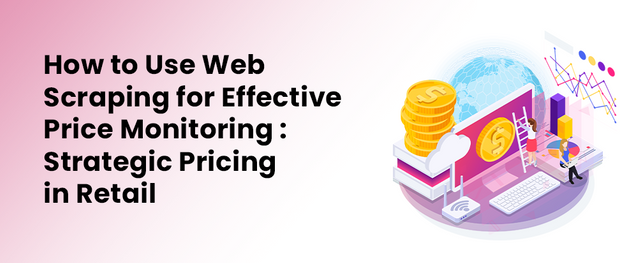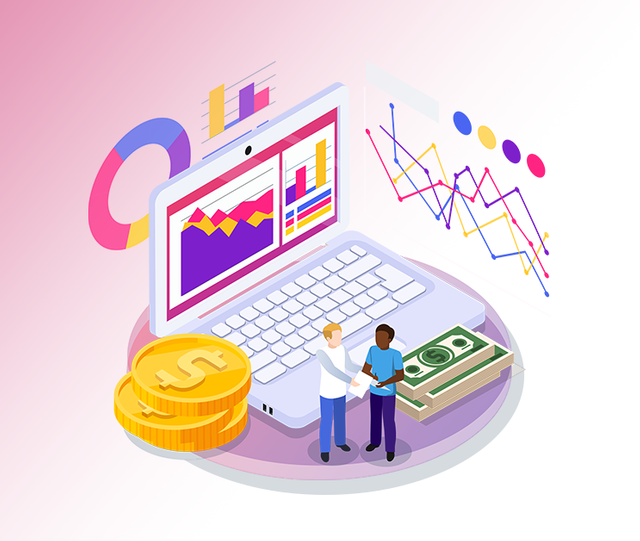How to Use Web Scraping for Effective Price Monitoring: Strategic Pricing in Retail
In today's competitive retail landscape, staying ahead of the pricing game is crucial for success. One powerful tool that retailers are leveraging is web scraping for price monitoring. This technique allows businesses to gather vast amounts of pricing data quickly and efficiently, enabling them to make informed decisions and craft superior pricing strategies. In this post, we'll explore how to use web scraping for effective price monitoring and strategic pricing in retail.
Understanding Web Scraping for Price Monitoring
Web scraping is the automated process of extracting data from websites. For price monitoring, it involves collecting pricing information, product details, and other relevant data from competitor websites. This data can then be analyzed to reveal valuable insights about the market and competitors' strategies.
The Benefits of Web Scraping for Price Monitoring
- Real-time Data: Get up-to-date pricing information as it changes.
- Comprehensive Coverage: Monitor prices across multiple competitors simultaneously.
- Efficiency: Automate the data collection process, saving time and resources.
- Accuracy: Reduce human error in data collection.
- Scalability: Easily scale your monitoring efforts as your business grows.
How to Implement Web Scraping for Price Monitoring
- Identify Your Targets
Start by listing the competitors and products you want to monitor. Focus on your key competitors and products that are most important to your business.
- Choose Your Scraping Tools
There are various web scraping tools available, ranging from simple browser extensions to sophisticated programming libraries. Some popular options include:
- Python libraries like Beautiful Soup or Scrapy
- Dedicated web scraping software like MrScraper or ParseHub
- Cloud-based services like ScrapingBee or Apify
- Design Your Scraping Strategy
Determine what data you need to collect. This might include:
- Product names and SKUs
- Current prices
- Discounted prices and promotional offers
- Stock availability
- Customer ratings and reviews
- Set Up Your Scraping Schedule
Decide how frequently you need to update your data. This could be daily, hourly, or even in real-time, depending on your market's volatility.
- Collect and Store the Data
Run your scraping tools according to your schedule and store the collected data in a structured format, such as a database or spreadsheet.
- Analyze the Data
Use data analysis tools to uncover insights from your collected data. Look for patterns, trends, and anomalies in pricing strategies.
- Act on the Insights
Use the insights gained to inform your pricing decisions and overall strategy.
Revealing Competitor Strategies Through Web Scraping
Web scraping can uncover valuable information about your competitors' pricing strategies:
Pricing Patterns
By analyzing historical price data, you can identify patterns in how competitors adjust their prices over time. This might reveal:
- Regular price fluctuations (e.g., weekend discounts)
- Seasonal pricing strategies
- Responses to market events or holidays
Promotional Strategies
Scraping can help you understand your competitors' promotional tactics:
- Frequency and duration of sales
- Types of promotions offered (e.g., percentage discounts, buy-one-get-one deals)
- Product bundling strategies
Discount Cycles
By tracking price changes over time, you can identify discount cycles:
- When discounts typically start and end
- How deep the discounts usually are
- Which products are most frequently discounted
Crafting Superior Pricing Strategies
Armed with these insights, you can develop more effective pricing strategies:
- Dynamic Pricing: Adjust your prices in real-time based on competitor movements and market demand.
- Optimal Timing: Time your promotions and discounts to maximize impact and minimize unnecessary price cuts.
- Competitive Positioning: Strategically price your products to highlight your value proposition compared to competitors.
- Bundle Optimization: Create attractive product bundles based on competitor offerings and pricing.
- Margin Protection: Identify opportunities to maintain or increase margins without losing competitiveness.
Ethical and Legal Considerations
While web scraping is a powerful tool, it's important to use it responsibly:
- Respect website terms of service and robots.txt files
- Don't overload target websites with requests
- Be mindful of collecting and using personal data
- Consider the legal implications in your jurisdiction
If you're keen on diving deeper into the legal considerations surrounding scraped data, don't miss our previous blog post: Legal Considerations When Using Scraped Data.
Web scraping for price monitoring is a game-changer in retail strategy. By leveraging MrScraper's advanced technology, retailers can gain unprecedented insights into competitor pricing and promotional strategies. This knowledge, when applied strategically, can lead to more competitive pricing, improved margins, and ultimately, business growth.
Remember, the key to success is not just in collecting the data, but in how you analyze and act on it. Use the insights provided by MrScraper to continually refine your pricing strategy and stay ahead in the competitive retail landscape.

